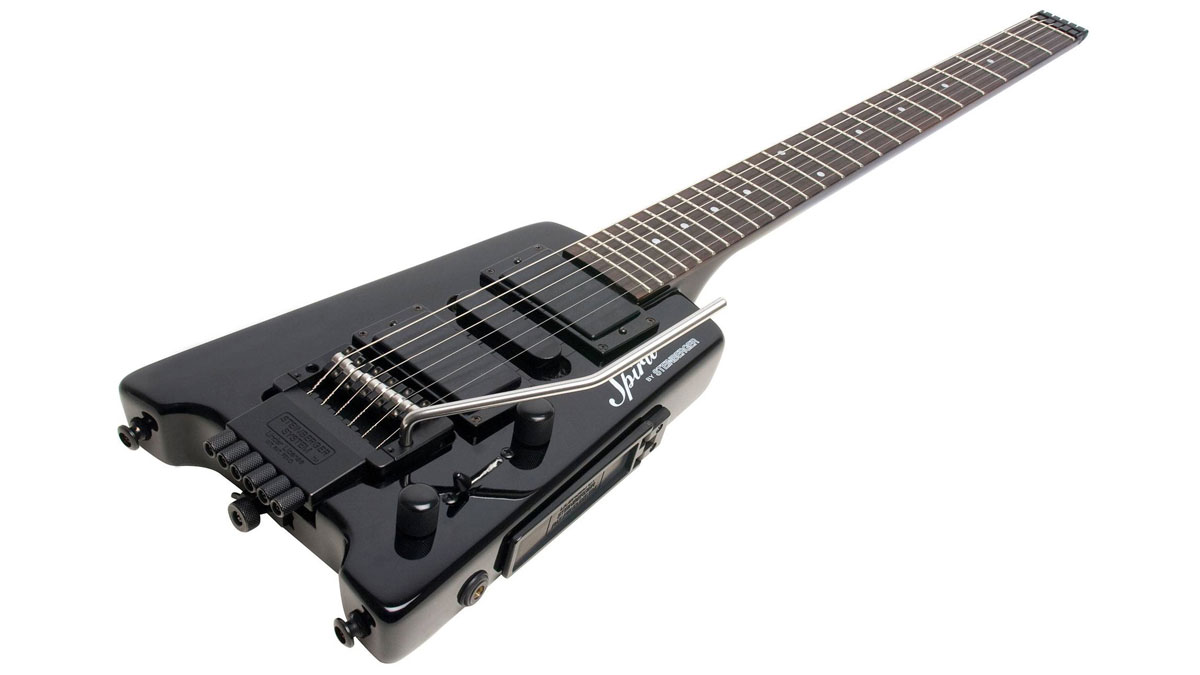Guitar World Verdict
While this isn’t the groundbreaking, high-level Steinberger from the 1980s, it offers players a way to try out this bass style for little monetary investment.
Pros
- +
Unique look; great sustain; travel-friendly design
Cons
- -
Presents some ergonomic challenges; front-pickup volume pot not nuanced; tuning system a bit stiff
You can trust Guitar World
Since its initial release in 1979, the Steinberger headless bass has enjoyed a special place in the world of instrument design.
While its widespread popularity was fairly short-lived and mostly confined to the ’80s, some prominent players helped to put it on the map: Geddy Lee, Sting, and even Cliff Williams of AC/DC all showed some love for the Steinberger bass somewhere in that decade. (Check out Rush’s Distant Early Warning, 1982 live performances by the Police, and AC/DC Guns for Hire on YouTube.)
And during the same period, stylish visionary Jamaaladeen Tacuma made the instrument popular on the jazz side. These guys mostly played the all-graphite, high-end L2 series, but nabbing one of those on the used market will set you back about $3K. For a fraction of that price, you can now own a modern take on that bass: the Spirit XT-25, offered by Gibson (which bought Steinberger in 1987).
The test bass featured a beautiful figured-maple top, revealed through a glossy, transparent black finish. There were a few quality issues (explained below), but sometimes that corresponds to significant reductions in production costs as a company tries to make an instrument more affordable. Gibson’s website bills this instrument as “the ultimate travel bass,” and in that context it serves players well. As a daily gigging bass, though, there a few playability aspects to consider.
The moment I strapped the bass on, I noticed a huge difference in how it sat in relation to my body. Due to its diminutive size, the bridge sat approximately 4.5" farther left of where a standard Fender bridge would be. Consequently, my fretting hand had to extend that same distance and direction to play in the first position.
As such, despite being a 34"-scale instrument, it felt much longer. Additionally, the neck angled forward about 35 degrees from my body, causing me to have to pull the bass in a bit to play comfortably. The practical implications of these ergonomic differences hit me when I took it to a rehearsal one night.
About 15 minutes in, I noticed my left shoulder aching from being extended out so far. Sitting down and using the provided leg rest helped some, although it still felt like I was playing an extremely long-scale bass.
Sonically, the bass offers amazing sustain and—with both pickups fully engaged and the tone knob adjusted halfway—delivers a delightfully warm and punchy tone that would be at home on any rock gig. The B string resonated well and sounded even with all the others. I noticed one problem with the neck-pickup volume control:
Normally, when the bridge pickup is dimed and you roll back the neck pickup, you get an equitable decrease in that pickup’s volume, leading to a punchier, more growling tone as the bridge pickup dominates. With our test bass, even the slightest roll back produced a significant volume drop, and thus I wasn’t able to get a very nuanced tone by that method. It was either all on or, for the most part, all off. The bridge pickup didn’t operate in this manner, which leads me to think it was probably a bad pot.
The bass is tuned via a system located at the bridge. The smooth, even tuning of the original Steinberger bass was one of its hallmark features, but I found the XT-25’s tuners to be a little stiff and inconsistent in their rotation. I could still tune the bass properly, just not as smoothly as I would have liked.
With the Spirit XT-25, Gibson offers players an economically friendly Steinberger-inspired bass, but the price break comes with a few compromises. Ultimately, even at this lower price, I would like to see a bit more attention to detail on the electronics and tuning aspects.
In regard to the ergonomics, the different feel would be something I’m sure a player would adjust to over time. Unquestionably, on a style level, this bass isn’t for everyone, but if you want to stand out on the bandstand, you can hardly do better than showing up with a bass like this—perhaps you can also sport a mesh muscle shirt just for fun.
Specifications
Street $450
Body Poplar
Neck Three-piece hard maple
Fingerboard radius 14"
Frets 24 medium-jumbo
Scale length 34"
Nut width 1.625"
12th-fret width 2.40"
Bridge Patented DoubleBall™ Bass Bridge
Tuning system Patented 40:1-ratio Direct-Pull
Pickups Steinberger Bass HB-1, HB-2
Controls Neck volume, bridge volume, tone
Weight 8.2 lbs
Total length 38.5"
Made in USA
“An esoteric boutique vibe, superb ergonomics and a powerful, unique preamp – Tobias is back”: Tobias Growler IV review
“Affordable versions of the three best basses I've ever held in my hands”: Sterling by Music Man completes its trilogy of Joe Dart signature models with a trio of made-to-order basses that cost less than $500











